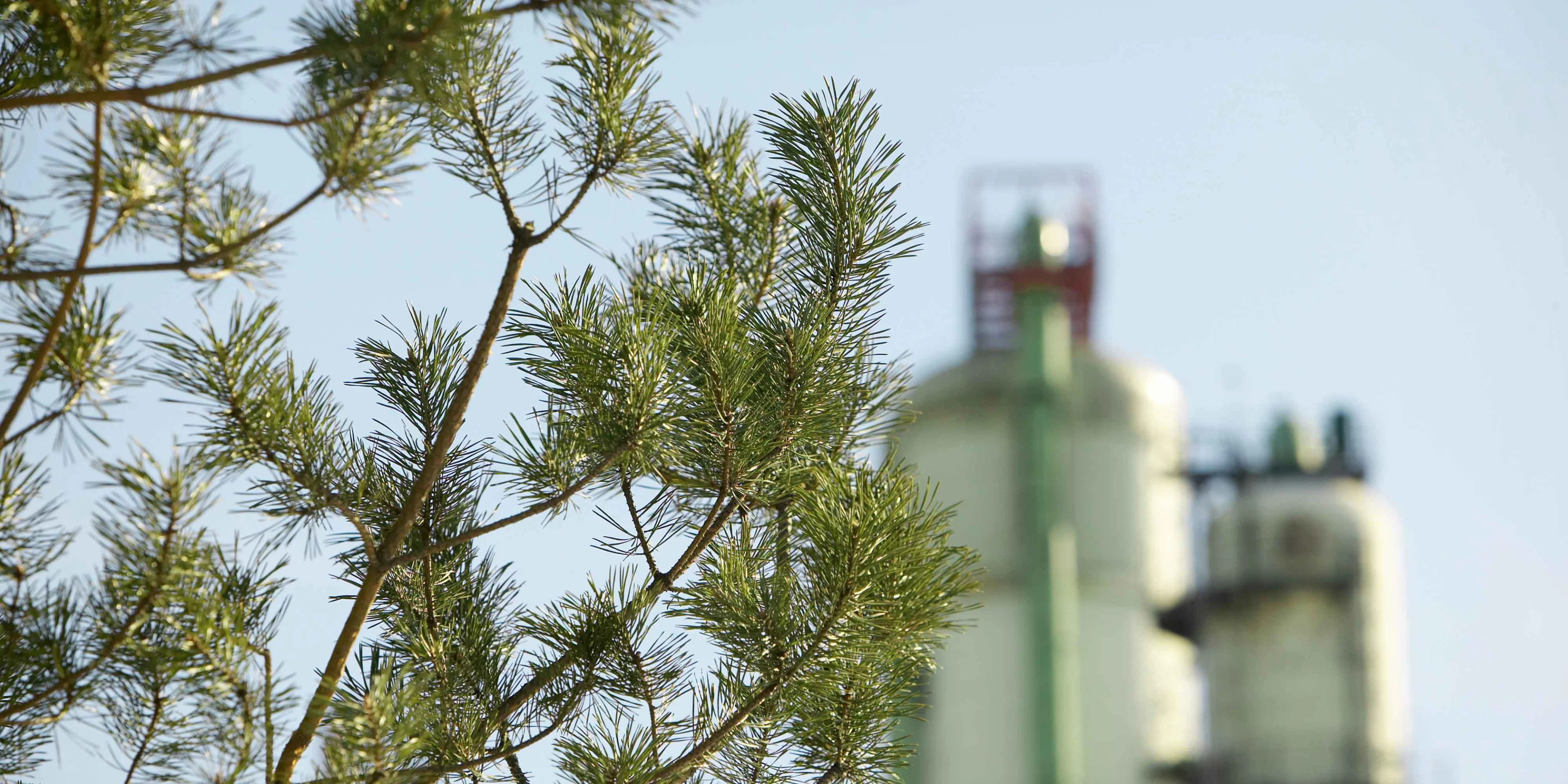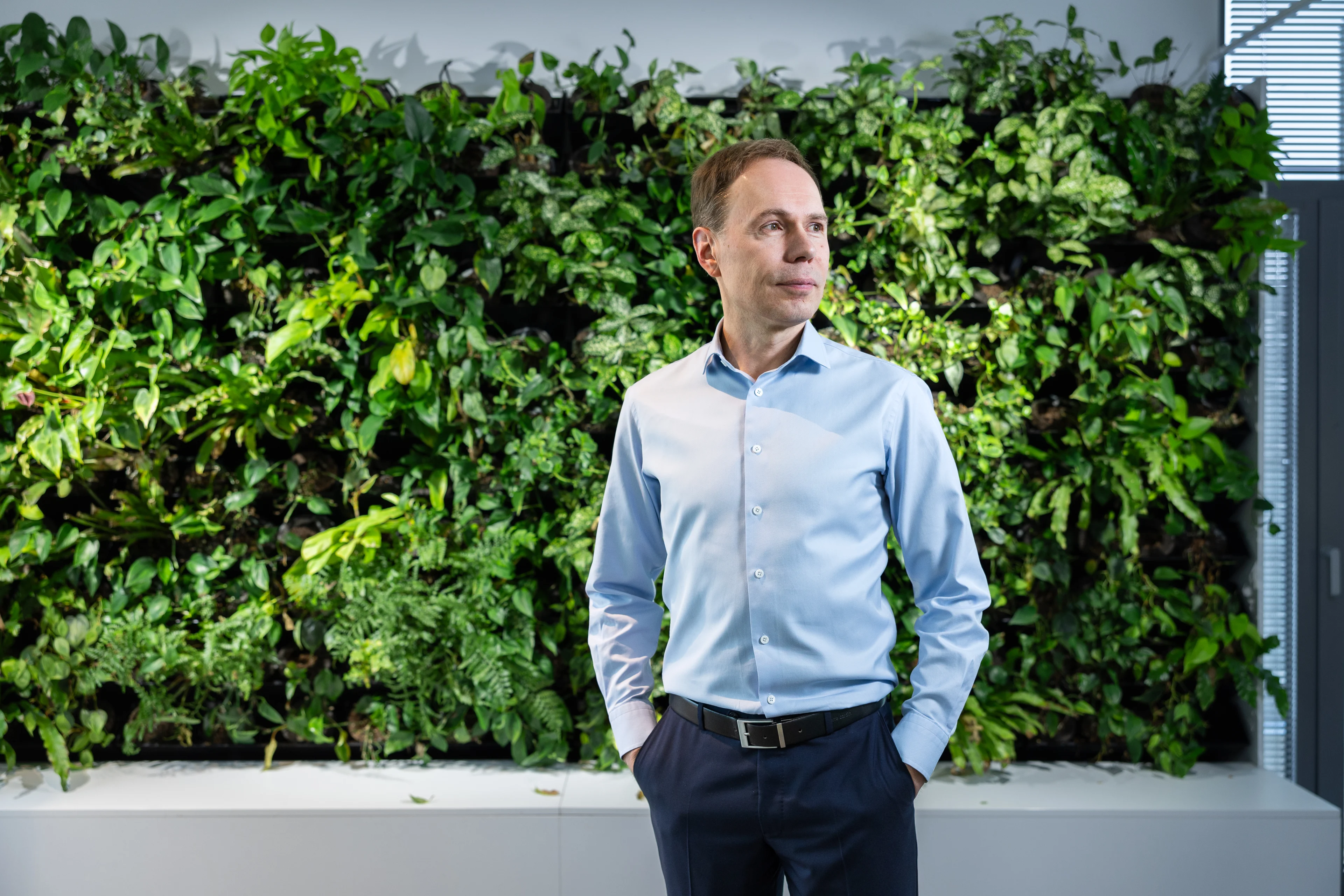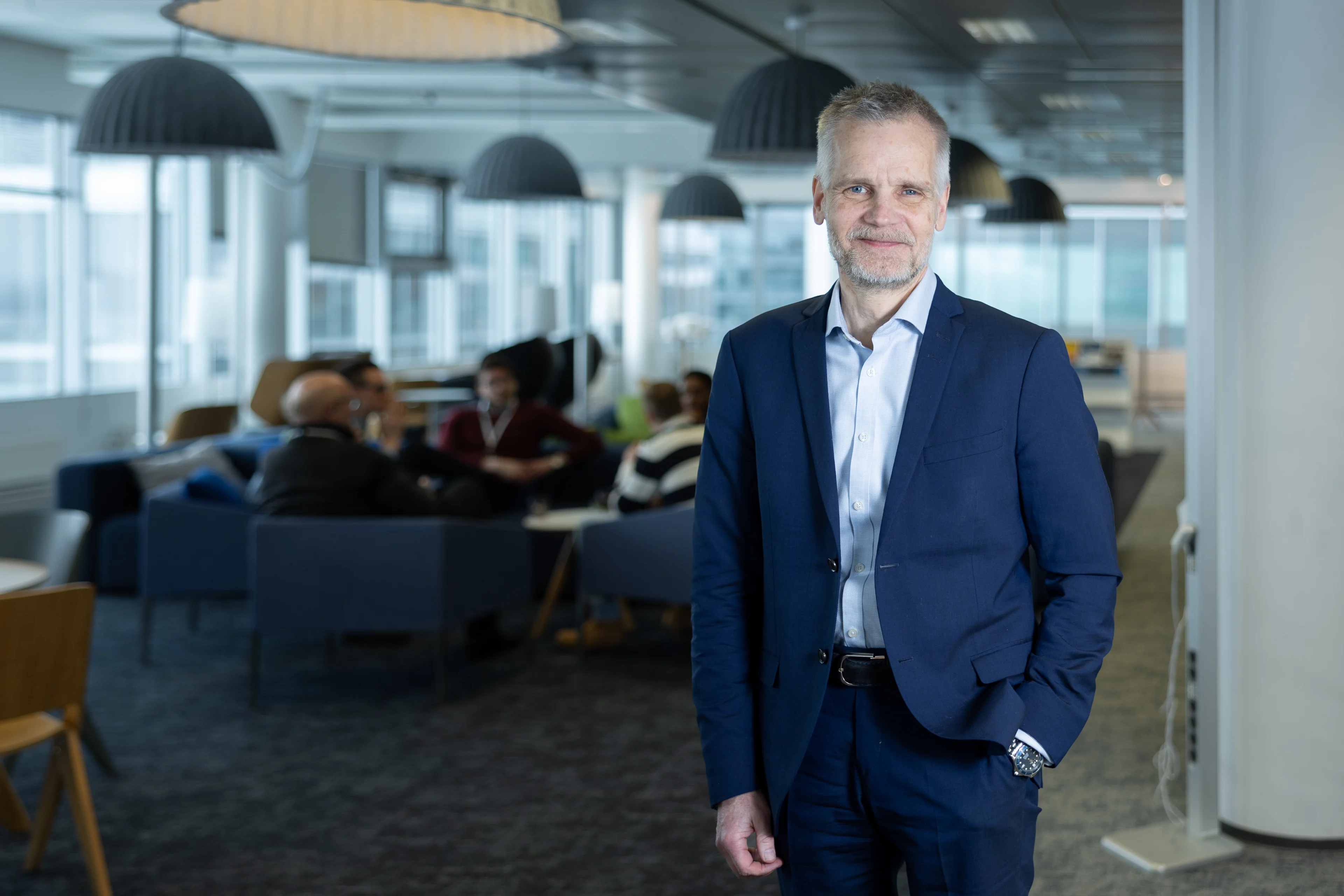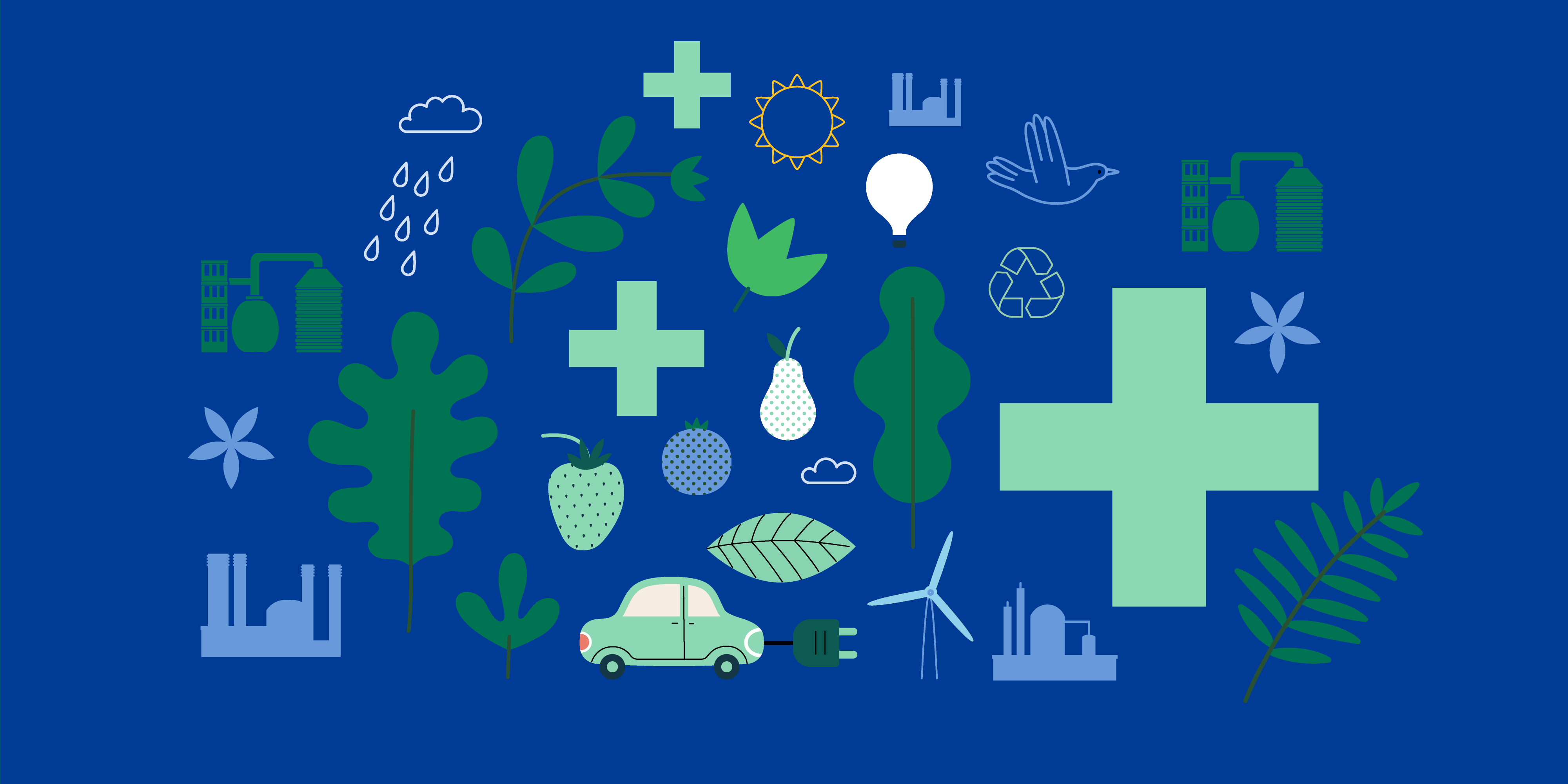
Sustainability
8 minute read
Transitioning towards a fossil-free future: a pioneering case study
Following COP28, the world has now set its sights on a fossil fuel free future, and the International Energy Agency (IEA) sees oil and gas demand peaking by the end of the 2020s. A frontrunner in renewable fuels, Neste is already out of the starting blocks with ambitious plans that could see its last remaining crude oil refinery in Finland discontinuing to process fossil oil in the next decade. Is this proof that fuel companies can be a part of the solution for a more sustainable future?
“I’m excited and I’m proud, too. Our ambition is to make Porvoo the most sustainable refinery in Europe,” says Sami Oja, a 30-year veteran of Neste, the leading producer of renewable diesel, sustainable aviation fuel and renewable feedstock solutions for polymers and chemicals production, as he outlines the transformation under way at Neste’s refinery in Porvoo, 50km east of Finland’s capital, Helsinki.
“These ambitious changes mean Neste as a whole shares the same strategy and all of our businesses can work together towards the same goals,” says Oja, a member of Neste’s Oil Products leadership team and responsible for the business’ supply chain management.

Sami Oja, a member of Neste’s Oil Products leadership team and responsible for the business’ supply chain management
Neste has been a global leader in renewable diesel since it developed its NEXBTL refining technology in the 1990s, and the Porvoo refinery was the site of Neste’s first two NEXBTL units, which to this day continue to produce high-quality renewable products from 100% renewable raw materials. While Neste constructed two new renewables-only refineries in Rotterdam and Singapore, Porvoo has continued to refine crude oil as well – for now. The company’s flexible transformation plan means the Porvoo refinery will gradually transfer into a renewable and circular (such as liquefied waste plastic) solutions refinery – with the option of Porvoo going crude oil free in the mid-2030s.
Neste’s decision to begin the Porvoo refinery transformation was announced in December 2023 as the United Nations Climate Change Conference (COP28) in Dubai closed with an agreement that UNCC executive secretary Simon Stiell called “the “beginning of the end” of the fossil fuel era. Although environmental campaigners were angered that the nearly 200 countries at the climate summit did not agree to “phase out” or “phase down” fossil fuels, the final agreement to “transition away” was still hailed as historic – and was the first to mention fossil fuels, the root cause of the climate crisis, in three decades of COP negotiations. The agreement called for “deep, rapid and sustained reductions in greenhouse gas (GHG) emissions” to keep the Paris target of limiting global temperature rises to 1.5C above pre-industrial levels, with a global stocktake aimed at forcing countries to develop stronger climate action plans (known as nationally determined contributions) by 2025.
With GHG emissions needing to be cut by 43% (from 2019 levels) by 2030 and 60% by 2035 to limit warming to 1.5C, can fossil fuel companies transform themselves to become part of the solution?
Starting a refinery revolution
“Neste’s Porvoo refinery is one of the most complex and advanced refineries in Europe,” says Markku Korvenranta, Executive Vice President of the Oil Products business unit at Neste. “Neste is already a big player in the transition, and our plan for Porvoo refinery will help us stay ahead of the curve."

Markku Korvenranta, Executive Vice President of the Oil Products business unit at Neste
Neste has already started with modifying its oil refinery units so they can be used for “co-processing”, a blend of crude oil, and renewable or recycled raw materials. Two units with co-processing capabilities went online in 2022 and a third was added last year. They currently use a small but significant amount of renewable raw materials (roughly 5-10%) but this can be gradually increased over time. The plan also involves converting oil processing units into pure renewable or recycled feeds. An investment decision is due this year on the construction of a new green hydrogen facility at Porvoo refinery, which would help replace fossil hydrogen in the refinery processes and offer the possibility of a district heating integration project with a local energy company.
“We’ve started early, as transforming such a complex refinery takes a long time,” says Korvenranta. “By the 2030s and 2040s we will be able to process the most challenging raw materials, such as forestry waste. Large amounts of waste and residues from existing forestry and agricultural production remain underutilized as few companies can process these types of lignocellulosic biomass. They can, however, be transformed into valuable renewable products.”
“For now we are at the very early stages of our transition. In the mid-2030s we will have the option to stop crude oil refining altogether but our plan is flexible and we can move at different speeds according to the geopolitical situation, the targets of governments and the needs of our customers.”
“We’ve made a lot of progress in the past couple of years, with waste plastic and renewable raw materials,” adds Oja. “There is huge potential in chemical recycling of waste plastics, and we have ambitious targets for increasing our capacity to process liquefied waste plastic into high-quality raw materials for new plastics.”
“Overall, the absolute volumes of renewable and circular products and solutions coming from our conventional oil refinery are still modest in comparison to fossils, but last year the liquefied waste plastic processed was double the previous year’s volumes – and over the coming years, as the transformation progresses, the volume increase of both renewable and recycled solutions will be significant.”
Can the oil and gas industry as a whole change?
After a year confirmed as the hottest on record, at 1.48C above pre-industrial levels, and with warnings that 2024 could be even hotter, can oil and gas companies – which currently supply more than half of global energy needs – be a part of the change we need to see in the world?
“Yes,” says Christophe McGlade, head of the Energy Supply Unit at the International Energy Agency (IEA) and lead author of its The Oil and Gas Industry in Net Zero Transitions report, published a few weeks ahead of COP28. “But as a whole the oil and gas industry is not there. Oil and gas producers account for only 1% of total clean energy investment globally – and more than 60% of this comes from just four companies. Most of the industry is not engaged in a meaningful way with net zero transition. They need to change if they want to be as big a part of the energy system as they are today.”
McGlade says that, while there is no single blueprint for change, the production, transport and processing of oil and gas result in 15% of global energy-related GHG emissions: “A huge amount, equivalent to all energy-related GHG from the United States.”
“There’s an awful lot the industry could be doing – mainly with methane emissions,” he adds.
The lack of even a target for reducing the emissions of companies responsible for the majority of the world’s oil and gas output shows the scale of the change needed.
Under existing policies, the IEA sees oil and gas demand peaking by the end of the 2020s – but that decline is not enough for the world to limit warming to 1.5C. That would require the global energy sector reaching net zero by 2050, with oil and gas use falling by 75%.
It is important to note, that even in this best case net-zero scenario, there is no expectation for oil and gas production to completely disappear. The IEA says that even in a 1.5C scenario, around 24 million barrels per day of oil will still be produced in 2050, as well as 920 billion cubic meters of gas. “But not all producers can be the last ones standing,” McGlade points out. “Many say they will be the ones to keep producing through transition and beyond, but they cannot all be right.”
Finally, using the huge expertise residing in major oil and gas companies is also something McGlade says is a resource that should be tapped into on the road to net zero: “Clean energy technologies such as deep-water wind turbines, operations that involve geothermals, drilling holes, mapping, processing biofuels, carbon capture, usage and storage (CCUS) - if we’re going to reach net zero by 2050 it is crucial that we utilize the skills and resources of these companies. They know how to get things done.”
A global transition to renewable energy solutions: are we on the right track?
It is clear that we have a long and challenging way to go when it comes to a fossil-free future – or even a future where the use of fossil energy is sufficiently reigned in to help us keep global warming in check. And with the next two COP meetings taking place in major oil-producing countries – in one of the birthplaces of the oil industry, Azerbaijan, in November 2024, and in Latin America’s biggest oil producing country, Brazil, in 2025 – can we expect the action that desperately needs to take place to transition away from fossil energy to happen.
Although critics feel the wording of the COP28 agreement on “transitioning away” from fossil energy was watered down, McGlade is feeling confident for the future: ”The language [of the COP28 agreement] is still very strong – it still has meaning. You can go to each country and say, you signed up to this – what are you doing? It sends a very clear signal on the direction of travel and what policymakers need to do.”
Korvenranta agrees and believes that Neste, already making concrete changes and transitioning its Porvoo refinery into solely renewable and circular solutions, will be showing the way. He concludes: “The reality is that change is coming. And at Neste, we have been preparing for this for 15-20 years.”
Credits:
Nick van Mead, an award-winning city journalist with more than 20 years at the Guardian and the Associated Press, most recently as deputy editor of Guardian Cities.





